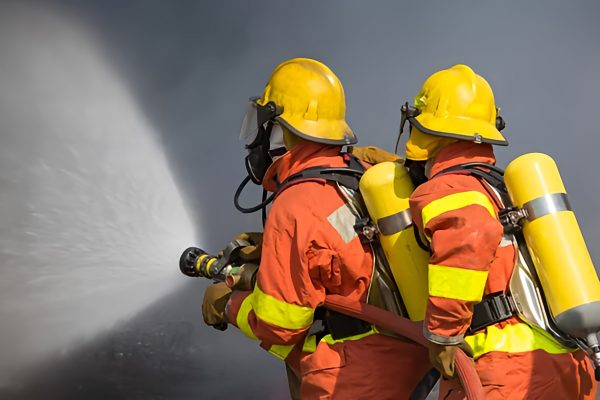According to the National Fire Protection Association (NFPA), 96% of fires are triggered by human activity versus natural causes such as lightening strikes, volcanic eruptions or spontaneous combustion.
OSHA reports that close to 200 workplace fires are reported daily and NFPA reports that over 54,000 require outside fire department response. The majority of these are at industrial/manufacturing facilities—the remainder are in offices, retail establishments or warehouses. Almost all are preventable!
To effectively mitigate the risk of facility fires, a proactive approach emphasizing prevention and preparedness is essential. Employees should be well-informed about preventative measures relevant to their daily tasks and responsibilities as well as clearly instructed on appropriate actions in the event of a fire. Stress the importance of personal awareness of all the fire hazards in their work areas.
Here are a few fire safety tips that you can distribute to your staff:
- Proper Housekeeping:
- Encourage employees to keep their work areas tidy and free of any wastepaper, trash and any other materials that can easily catch fire.
- Properly store chemicals.
- Keep flammable items away from heat sources.
- Maintain Equipment:
- Check electrical cords. If a cord is damaged in any way, replace it. Try not to lay cords in places where they can be stepped on, as this may contribute to the damage and deterioration of the protective outside coating.
- Don’t overload electrical circuits or outlets.
- Turn off electrical appliances or machinery at the end of each day. Stress this with employees using personal space heaters or fans.
- Keep industrial and office equipment clean, lubricated and properly repaired.
- Maintain Proper Egress
- Ensure that all exits, especially emergency exits and pathways, are free from obstructions.
- Use illuminated signs to clearly mark exits.
- Minimize Smoking:
- Smoking remains a frequent cause of workplace fires. Provide a designated smoking area with receptacles for extinguishing smoking materials and offer smoking cessation programs.
- Maintain Fire Extinguishers, Fire Suppression Systems, Alarms and Smoke Detectors
- Internally check fire extinguishers, suppression, alarms systems, and smoke detectors regularly as recommended by the manufacturer or local ordinances.
- Professionally check all the above according to the manufactures’ recommendations or local requirements—this is typically annually or semi-annually.
- Keep diligent record of inspections and issues.
- Train Employees
- Emergency Action and Fire Drills are crucial to engage employees and maximize a proper response.
- Have Written Plans for both and update them annually.
- Conduct Portable Fire Extinguisher Usage Training as required by OSHA—quick response to small (incipient) fires is one of the most effective ways minimizing damage and protect Human Life.
Here are some tips to prepare your workplace for a fire emergency. As soon as the fire is discovered:
- Call 911 – listen to the emergency operators and don’t hang up until told to do so.
- Start the Fire Emergency Evacuation Plan
- Activate the fire alarm if it isn’t activated automatically to alert occupants.
- Make sure everyone is leaving immediately and following the PLANNED evacuation/escape routes. DO NOT USE ELEVATORS.
- Close doors, windows to limit the spread of fire and smoke.
- Assure that everyone is meeting at one of the designated areas outside the building—take head counts frequently and keep responders informed.
- Any personnel TRAINED to fight small (incipient) fires should do so with the CORRECT portable fire extinguisher.
The best way to avoid a fire in your facility is through prevention—enforce fire prevention rules. The best way to reduce fire damage is through preparation—have a written Fire Emergency Plan and thoroughly train employees on the plan.
And always emphasize the seriousness of a fire.
Novisal can help you develop the correct Fire Prevention and Emergency Response Plans and train employees in all aspects of Fire Safety and Prevention.
